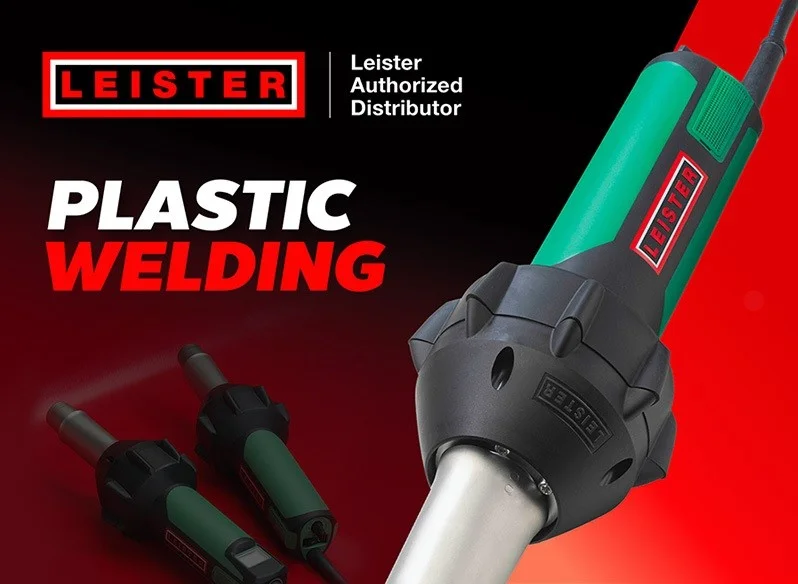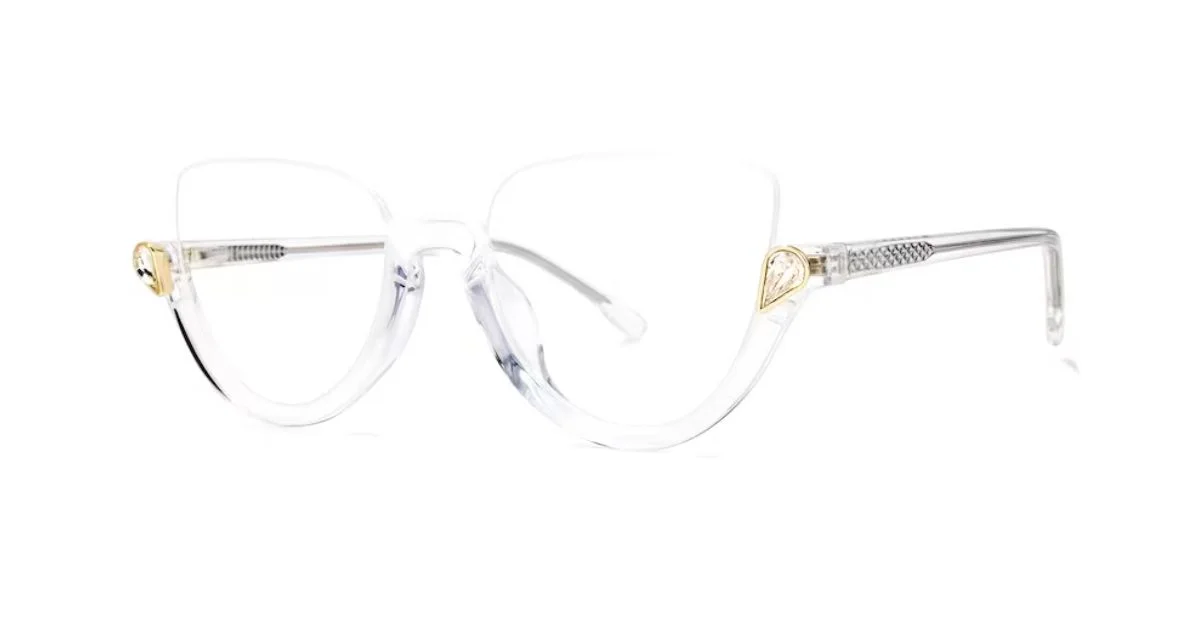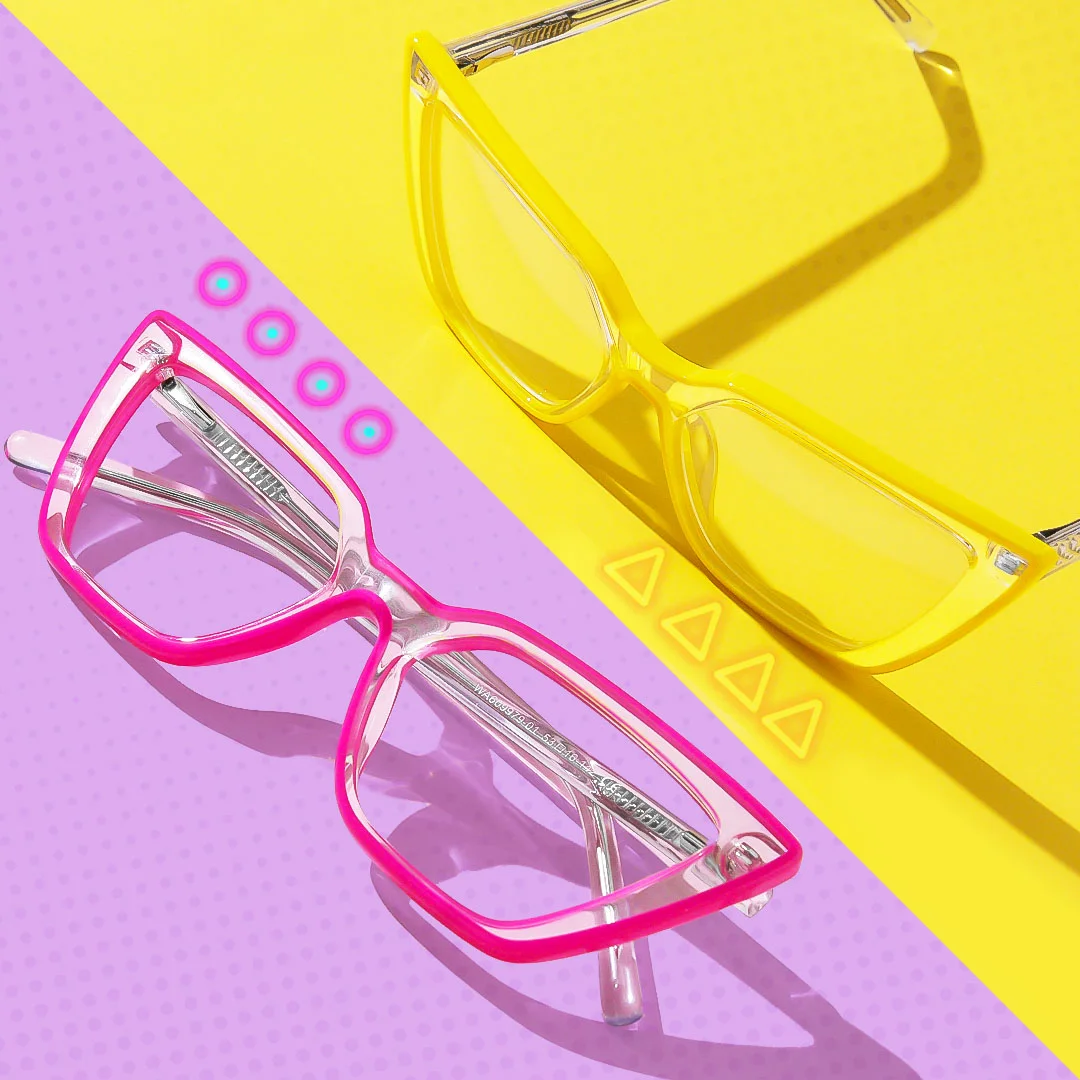GADGETS
A Beginner’s Guide to Plastic Welding: Tips from Leister Malaysia

Plastic welding is a highly effective technique for joining plastic materials in various industries, including construction, automotive, and electronics. For those new to plastic welding, understanding the basics of different welding techniques, equipment, and troubleshooting tips can help achieve strong, durable bonds. This guide, brought to you by Leister Malaysia, will introduce you to the fundamentals of plastic welding, cover common mistakes to avoid, and offer insights into maintaining your welding tools using Leister’s industry-leading solutions.
1. Understanding Plastic Welding with Leister Malaysia
Why Plastic Welding?
Plastic welding is a process that involves melting two compatible plastics together to form a durable bond. This technique is often preferred over adhesives or fasteners for applications requiring airtight, waterproof, or structurally sound joins. Leister Malaysia is dedicated to providing Malaysian customers with high-quality plastic welding solutions that meet the needs of various industries, from small repair jobs to large-scale construction projects.
Whether you’re working on a DIY project or a professional task, learning to weld plastic with Leister’s reliable tools opens up new possibilities for repair, construction, and manufacturing.
2. Types of Plastic Welding Techniques
Leister Malaysia offers a range of tools that can handle various plastic welding techniques. Here’s an overview of the most common methods:
Hot Air Welding
Hot air welding is a versatile technique where hot air is used to melt plastic surfaces, allowing them to fuse together. This method is suitable for applications such as roofing, flooring, and PVC pipe repairs. Leister’s TRIAC ST and TRIAC AT hot air welders are ideal for beginners, as they are easy to use, portable, and come with precise temperature controls.
Extrusion Welding
In extrusion welding, a filler material is heated and extruded between two plastic surfaces, creating a strong bond. This technique is useful for thicker materials and large seams, such as those found in tank fabrication or geomembrane installations. Leister Malaysia offers powerful extrusion welders, such as the WELDPLAST S1 and WELDPLAST S2, which are well-suited for industrial applications in Malaysia.
Contact Welding
Contact welding applies heat directly to the plastic using a heated metal rod or plate. This technique is often used for smaller, more precise applications, such as electronics or medical device manufacturing, where control and precision are essential.
Electrofusion and Ultrasonic Welding
While these are more advanced techniques, they are commonly used in specialized applications, such as pipeline construction (electrofusion) and high-precision manufacturing (ultrasonic welding). For these needs, Leister Malaysia provides consulting services and access to specialized equipment.
3. Essential Equipment and Tools for Plastic Welding
Getting started with plastic welding requires the right equipment. Leister Malaysia provides a variety of options to suit all experience levels:
Handheld Welders
Perfect for small or precise jobs, handheld welders are portable and easy to control. Leister’s TRIAC ST is a highly recommended tool for beginners, offering ergonomic design and precise temperature control, making it ideal for DIY projects and repair work.
Industrial Welders
For large projects or demanding applications, Leister’s industrial welders, such as the VARIMAT V2 for roofing and GEOSTAR G7 for geomembranes, deliver consistent, high-quality results. These welders are commonly used by professionals across Malaysia for their efficiency and reliability.
Accessories and Safety Gear
In addition to welders, you’ll need nozzles, welding rods, and safety gear like heat-resistant gloves and goggles. Leister Malaysia stocks a full range of accessories to enhance your welding experience and ensure safe, effective operation.
4. Choosing the Right Plastic for Welding
Choosing compatible plastics is essential for successful welding. Leister Malaysia offers guidance on selecting the best materials for each technique.
Identifying the Plastic
Commonly welded plastics include PVC, HDPE, and polypropylene, each with unique characteristics. Leister Malaysia recommends confirming the type of plastic before starting, as different materials require different temperatures and techniques.
Material-Specific Tips
For example, PVC requires lower temperatures than polypropylene, which is more heat-resistant. Leister Malaysia’s welders come with adjustable settings, allowing users to easily adapt to different materials and achieve optimal welds.
5. Step-by-Step Guide for a Basic Plastic Weld
For beginners, hot air welding is one of the most accessible techniques. Here’s a simple step-by-step guide using Leister Malaysia’s TRIAC ST hot air welder:
- Preparation
Clean the surfaces of the plastic to remove any dust, oil, or debris. Proper surface preparation is essential for a strong bond. - Set Up the Welder
Adjust the temperature on the TRIAC ST according to the type of plastic. Leister Malaysia provides recommended settings for different materials in the user manual. - Start Welding
Hold the welder at a consistent distance from the plastic surface to ensure even heating. Once the plastic begins to soften, press the two surfaces together to form a bond. - Cooling and Finishing
Allow the weld to cool completely before testing its strength. Proper cooling ensures a strong, stable joint without warping.
6. Troubleshooting Tips from Leister Malaysia
Even with quality equipment, beginners may encounter some common issues. Here are troubleshooting tips to help:
- Weak or Inconsistent Bonds
Weak bonds are often due to incorrect temperature or poor surface preparation. Make sure the surfaces are clean, and adjust the temperature on your Leister welder as needed. - Overheating and Plastic Burn
If the plastic is burning or bubbling, reduce the temperature or increase the distance between the welder and the material. Leister Malaysia’s tools have precise temperature controls, which make it easy to adjust settings to avoid overheating. - Warping or Distortion
Warping occurs more often with thin plastics. To avoid this, apply heat slowly and avoid excessive pressure during cooling.
7. Maintenance of Your Leister Welding Tools
Proper maintenance extends the life of your tools and ensures consistent results. Leister Malaysia offers support and guidelines for keeping your equipment in optimal condition.
- Cleaning and Storage
After each use, clean the nozzle and other components to prevent plastic buildup. Store your tools in a dry environment to avoid moisture damage, which is particularly important in humid climates like Malaysia’s. - Replacing Parts
Over time, nozzles and other parts may wear out. Leister Malaysia stocks compatible replacement parts, ensuring that you always have access to high-quality components for your welder. - Routine Inspections
Regular inspections can catch wear or damage early, helping to prevent breakdowns. Leister Malaysia’s service centers provide professional inspections and maintenance services for customers across Malaysia.
8. Avoiding Common Beginner Mistakes
Plastic welding requires patience and practice. Here are some mistakes beginners often make and how to avoid them:
- Rushing the Process
Take your time to ensure proper heating and positioning. Rushing can lead to weak bonds. - Skipping Surface Preparation
Surface preparation is critical for strong welds. Ensure that all surfaces are clean before beginning. - Ignoring Safety Precautions
Always wear the necessary safety gear and work in a well-ventilated area. Leister Malaysia stresses the importance of safety and provides guidance on proper safety protocols for welding.
9. Why Choose Leister Malaysia for Your Plastic Welding Needs?
Leister Malaysia is a trusted provider of plastic welding solutions, offering high-quality equipment and unparalleled support to help you succeed.
- Reliable and Innovative Products
Leister’s tools are known for their durability, precision, and ease of use, making them ideal for both beginners and professionals. - Wide Product Range
Leister Malaysia offers a full range of products, from entry-level welders like the TRIAC ST to advanced industrial tools such as the VARIMAT V2. No matter your project size, Leister has the right solution. - Local Support and After-Sales Service
Leister Malaysia provides comprehensive after-sales support, including troubleshooting assistance, product maintenance, and access to service centers across Malaysia. Our team is here to help you get the most out of your equipment.
10. Conclusion
Plastic welding is a valuable skill that, with practice and the right equipment, can lead to professional-quality results. By following the steps outlined here and using high-quality tools from Leister Malaysia, you’ll be well on your way to mastering plastic welding. Start with simple projects, and as you gain experience, take on more complex tasks.
For more guidance, product recommendations, or technical support, visit Leister Malaysia’s website or contact our customer service team. We’re here to help you succeed in your plastic welding journey. Happy welding!
GADGETS
Everything About Crypticstreet .com Gadgets

Welcome to the world of innovative gadgets where technology meets creativity – introducing Crypticstreet .com Gadget! If you’re a tech enthusiast looking for something extraordinary, then you’ve come to the right place. Get ready to dive into a realm of cutting-edge features, seamless functionality, and a touch of mystery that sets Crypticstreet .com Gadget apart from the rest. Join us on this thrilling journey as we explore everything there is to know about this revolutionary device.
Features and Benefits of Crypticstreet .com Gadget
When it comes to the features and benefits of the Crypticstreet .com Gadget, there’s a lot to be excited about.
First off, this innovative gadget offers cutting-edge technology that allows users to seamlessly integrate their devices for a more streamlined experience. Whether you’re at home or on the go, this gadget is designed to enhance your productivity and make life easier.
One standout feature is its sleek design and user-friendly interface, making it simple for anyone to use. Additionally, the gadget boasts impressive battery life and fast charging capabilities, ensuring you can stay connected without interruptions.
Moreover, with advanced security measures in place, you can trust that your data is safe and protected while using the Crypticstreet .com Gadget. This device truly redefines convenience and efficiency in today’s tech-savvy world.
ALSO READ: SMART HOME EV CHARGER FACTORY
How It Works: A Step-by-Step Guide
Have you ever wondered how the Crypticstreet .com Gadget works its magic? Let’s dive into a step-by-step guide to unveil the mystery behind this innovative device.
Step 1: Unbox your Crypticstreet .com Gadget and marvel at its sleek design. It’s both stylish and functional, a true blend of form and technology.
Step 2: Power on the gadget and connect it to your smartphone via Bluetooth. The setup process is quick and seamless, ensuring a hassle-free experience for users of all levels.
Step 3: Explore the intuitive app interface that accompanies the gadget. From here, you can customize settings, track data, and unlock various features tailored to your needs.
Step 4: Start using the gadget in your daily routine – whether it’s monitoring fitness metrics, enhancing productivity, or simply enjoying its unique capabilities. Experience firsthand how Crypticstreet .com Gadget transforms the way you live and interact with technology like never before!
Ready to embark on this technological journey? Get ready to be amazed by what Crypticstreet .com Gadget has in store for you!
ALSO READ: IHMS CHAIR: REVOLUTIONIZING COMFORT AND SUPPORT IN SEATING
Customer Reviews and Testimonials
Customer Reviews and Testimonials are like a window into the real-life experiences of users who have tried out Crypticstreet .com Gadgets. Reading through these reviews can provide valuable insights into how the gadget performs in different scenarios and whether it lives up to its promises.
Many customers praise the sleek design and user-friendly interface of the gadget, making it a popular choice among tech-savvy individuals. Some have even mentioned how it has simplified their daily tasks and enhanced their productivity levels.
In contrast, a few reviewers have pointed out minor issues with connectivity or battery life, reminding us that no product is perfect for everyone. These candid opinions help potential buyers weigh the pros and cons before making a purchase decision.
Customer Reviews and Testimonials offer an authentic perspective on what to expect from Crypticstreet .com Gadgets, helping consumers make informed choices based on real-world feedback.
Comparison with Other Similar Gadgets
When it comes to comparing Crypticstreet .com gadgets with other similar devices on the market, there are a few key aspects that set them apart. First and foremost, the innovative design of Crypticstreet .com gadgets ensures a sleek and modern look that appeals to tech-savvy consumers.
In terms of functionality, Crypticstreet .com gadgets offer cutting-edge features that enhance user experience and provide seamless integration with other smart devices in your home. The ease of use sets them apart from competitors, making them accessible to users of all technical abilities.
Furthermore, the durability and reliability of Crypticstreet .com gadgets make them a standout choice for those looking for long-lasting technology solutions. When compared to other similar gadgets, it’s clear that Crypticstreet .com prioritizes quality and performance above all else.
ALSO READ: VEHICLE DIAGNOSTICS WITH CAR OBD2 SCANNER AND WIRELESS BLUETOOTH OBD2 SCANNER
Price and Availability
Are you wondering about the price and availability of the innovative Crypticstreet .com gadget? Let’s dive into it!
When it comes to pricing, Crypticstreet .com offers competitive rates for their high-quality gadgets. The cost is justified by the advanced technology and features packed into each device, making it a worthwhile investment for tech enthusiasts. Plus, with various payment options available, purchasing a gadget from Crypticstreet .com is convenient and hassle-free.
Now, let’s talk about availability. These cutting-edge gadgets can be easily purchased online through the official website of Crypticstreet .com. With just a few clicks, you can have your hands on one of these futuristic devices delivered right to your doorstep. And don’t worry about stock running out – Crypticstreet .com ensures that their products are readily available for customers worldwide.
Intrigued? Check out the website today to explore more about the price and availability of these revolutionary gadgets!
The Future of Crypticstreet .com Gadget
The future of Crypticstreet .com Gadget looks promising and exciting. As technology continues to advance at a rapid pace, we can expect even more innovative features and functionalities to be integrated into this gadget. With ongoing research and development, the possibilities are endless.
There is a growing demand for smart gadgets that simplify our lives, and Crypticstreet .com Gadget is well-positioned to meet these needs. The company’s commitment to quality and customer satisfaction bodes well for its future success in the market.
As consumers increasingly rely on technology in their daily routines, Crypticstreet .com Gadget has the potential to become an indispensable tool for many. Whether it’s enhancing productivity, entertainment options, or convenience, this gadget is likely to evolve with the changing times.
The future of Crypticstreet .com Gadget holds great promise as it continues to adapt to the ever-changing landscape of tech innovations.
ALSO READ: DESIGNING TOMORROW: UNLOCKING THE POTENTIAL OF LARGE FORMAT PRINTING
Conclusion
In a world where technology continues to revolutionize our daily lives, Crypticstreet.com gadget stands out as a cutting-edge innovation that combines convenience and functionality seamlessly. With its impressive features, easy-to-use interface, and positive customer reviews, this gadget has established itself as a game-changer in the market.
As we look towards the future of technology and gadgets, it’s clear that Crypticstreet.com has set a high standard for excellence. Its innovative approach to enhancing everyday tasks showcases the endless possibilities that technology can offer.
For those seeking a reliable and efficient gadget to simplify their lives, Crypticstreet.com is undoubtedly worth considering. Embrace the power of innovation with Crypticstreet.com gadget – your gateway to a more streamlined and connected lifestyle.
FASHION
Enhance Your Vision in Style: Blue Light Reading Glasses and Stylish Prescription Eyewear

In today’s digital age, where screens dominate our daily lives, protecting our eyes from the harmful effects of blue light has become increasingly important. Additionally, for those who require vision correction, finding stylish prescription glasses that not only enhance visual clarity but also complement personal style is essential. Vooglam, a premier online eyewear store, offers a diverse selection of blue light reading glasses and stylish prescription eyewear, combining functionality with fashion to meet the needs of modern-day individuals.
Understanding the Importance of Blue Light Reading Glasses
Blue light, emitted by digital screens, has been linked to a range of eye-related issues, including digital eye strain, headaches, and disrupted sleep patterns. Blue light reading glasses are specifically designed to filter out or block a significant portion of this harmful light, reducing eye strain and promoting better sleep quality. By incorporating specialized lenses that selectively filter blue light wavelengths while maintaining optimal visual clarity, these glasses offer a proactive solution to protect eye health during extended periods of reading or screen time.
Vooglam’s Range of Blue Light Reading Glasses
At Vooglam, they prioritize both functionality and style when it comes to eyewear. That’s why they offer a curated selection of blue light reading glasses that seamlessly blend advanced technology with fashionable designs. Whether you prefer classic and understated frames or bold and statement-making styles, Vooglam has the perfect pair of blue light reading glasses to suit your aesthetic preferences. Crafted from high-quality materials and featuring advanced lens technology, our glasses provide effective protection against blue light exposure while ensuring comfort and durability.
Stylish Prescription Glasses for Enhanced Visual Clarity
In addition to blue light reading glasses, Vooglam caters to individuals requiring vision correction with its range of stylish prescription eyewear. They understand that finding the right pair of glasses is essential for achieving optimal visual clarity and comfort. That’s why they offer a diverse selection of frames, ranging from timeless classics to contemporary designs, to suit every taste and preference. Whether you need glasses for nearsightedness, farsightedness, or astigmatism, Vooglam ensures that you can find the perfect pair to meet your specific vision needs.
The Convenience of Ordering Glasses Online with Vooglam
Ordering glasses online has never been easier or more convenient, thanks to Vooglam’s user-friendly platform. With just a few clicks, customers can browse through our extensive collection of frames, filter by style, color, and price range, and select the perfect pair to suit their preferences. Our intuitive ordering process allows customers to upload their prescription details, customize their lenses, and securely checkout, all from the comfort of their own homes. Plus, with fast and reliable shipping options, customers can expect their new glasses to arrive promptly at their doorstep.
Why Choose Vooglam for Your Eyewear Needs?
When it comes to protecting your eyes and enhancing visual clarity, Vooglam is your trusted partner in eyewear. Here’s why customers choose Vooglam for their blue light reading glasses and stylish prescription eyewear:
- Quality Assurance: Each pair of glasses is crafted with precision and attention to detail, ensuring durability, comfort, and optimal performance.
- Fashion-Forward Designs: Our curated collection features a variety of stylish frames to suit every taste and preference, ensuring that you can express your style with confidence.
- Advanced Lens Technology: Our glasses incorporate specialized lenses that effectively filter blue light or correct vision issues, providing clear and comfortable vision in any situation.
- Convenient Online Ordering: With our seamless online ordering process, customers can browse, customize, and order their glasses with ease, all from the convenience of their own homes.
- Exceptional Customer Service: Our dedicated team is committed to providing personalized assistance and support throughout the ordering process, ensuring a positive shopping experience from start to finish.
Conclusion: Prioritize Your Eye Health and Style with Vooglam
In conclusion, Vooglam offers a comprehensive range of blue light reading glasses and stylish prescription glasses designed to protect and enhance your vision with style. Whether you’re seeking to reduce digital eye strain or achieve optimal visual clarity, Vooglam has the perfect pair of glasses to meet your needs. Embrace the convenience and comfort of ordering glasses online with Vooglam and prioritize your eye health without compromising on style.
GADGETS
Elevate Your Reading Experience with Vooglam’s Cat Eye Reading Glasses: Where Style Meets Functionality

Reading glasses are not just a tool for clearer vision but also an accessory that can add a touch of sophistication to any outfit. When it comes to combining style with functionality, Vooglam, an esteemed online eyewear store, stands out with its curated selection of cat eye reading glasses. With a focus on both fashion and practicality, Vooglam offers stylish reading glasses that enhance your reading experience while making a bold fashion statement.
The Allure of Cat Eye Reading Glasses
Cat eye reading glasses have long been revered for their timeless elegance and vintage-inspired charm. Characterized by their upswept outer edges and feline-inspired silhouette, these glasses exude an air of sophistication that effortlessly complements a variety of face shapes and personal styles. Whether adorned with subtle embellishments or bold patterns, cat eye reading glasses offer a unique blend of fashion and function, making them a popular choice among readers who appreciate both style and practicality.
Vooglam’s Collection of Stylish Reading Glasses
At Vooglam, they believe that reading glasses should not only enhance your vision but also reflect your style and personality. That’s why we’ve curated a diverse collection of stylish reading glasses that cater to a variety of tastes and preferences. From classic cat eye frames with a vintage twist to contemporary designs with a modern edge, Vooglam offers a range of options to suit every aesthetic sensibility. Crafted from high-quality materials and featuring advanced lens technology, our reading glasses provide optimal clarity and comfort without compromising on style.
Elevate Your Reading Experience with Vooglam’s glasses
Reading is not just a task but a cherished pastime for many, and Vooglam is committed to enhancing your reading experience with glasses that are both stylish and functional. Our cat eye reading glasses are designed to provide optimal clarity and comfort, allowing you to immerse yourself in your favorite books and magazines without distraction. Whether you’re enjoying a leisurely afternoon reading session or tackling a pile of work documents, Vooglam’s reading glasses ensure that you can do so in style.
The Versatility of Stylish Reading Glasses
One of the key attractions of stylish reading glasses is their versatility, allowing you to express your personality and enhance your look with ease. Whether you’re dressing up for a special occasion or keeping it casual for everyday wear, cat eye reading glasses add a touch of glamour and sophistication to any ensemble. With their sleek and flattering silhouette, these glasses make a confident fashion statement that is sure to garner compliments wherever you go.
The Vooglam Difference: Quality, Style, and Service
When you choose Vooglam as your preferred eyewear destination, you can expect nothing less than exceptional quality, style, and service. Each pair of glasses in our collection is crafted with precision and attention to detail, ensuring durability, comfort, and optimal performance. Our commitment to customer satisfaction extends beyond the product itself, with a dedicated team of eyewear experts on hand to provide personalized assistance and support throughout your shopping experience.
Conclusion: Redefine Your Reading Experience with Vooglam’s Cat Eye Reading Glasses
In conclusion, Vooglam offers a curated selection of cats eye reading glasses that combine style with functionality to enhance your reading experience. Whether you’re seeking a classic vintage-inspired look or a contemporary design with a modern twist, Vooglam has the perfect pair of stylish reading glasses to suit your individual style and vision needs. Embrace the elegance and sophistication of cat eye reading glasses with Vooglam and elevate your reading experience to new heights of style and comfort.

 BUSINESS10 months ago
BUSINESS10 months agoBrand Visibility with Imprint Now and Custom Poly Mailers

 TECHNOLOGY9 months ago
TECHNOLOGY9 months agoDizipal 608: The Tech Revolution Redefined

 HEALTH6 months ago
HEALTH6 months agoYour Guide to Shedding Pounds in the Digital Age

 BUSINESS11 months ago
BUSINESS11 months agoExploring the Benefits of Commercial Printing

 HEALTH9 months ago
HEALTH9 months agoHappy Hippo Kratom Reviews: Read Before You Buy!

 HOME IMPROVEMENT10 months ago
HOME IMPROVEMENT10 months agoThe Do’s and Don’ts of Renting Rubbish Bins for Your Next Renovation

 HEALTH6 months ago
HEALTH6 months agoThe Surprising Benefits of Weight Loss Peptides You Need to Know

 LIFESTYLE10 months ago
LIFESTYLE10 months agoThe Disciplinary Wives Club: Spanking for Love, Not Punishment












